January 30, 2018, will go down as a major turning point in Guyana’s history. After three years of resolute leadership and advocacy by President David Granger, along with excellence in Foreign Affairs practice by the Minister of Foreign Affairs, Mr Carl Greenidge and his team, the United Nations’ Secretary General has referred the Guyana Venezuela Border controversy to the International Court of Justice (ICJ).
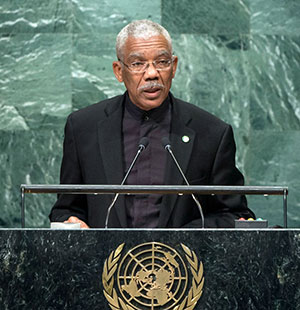
While this is the result Guyanese have been hoping for, it is understood that this is not the time to pause for celebration. While it is an established fact that the land boundary between Guyana and Venezuela was permanently and definitively delimited by the international arbitration on October 3, 1899, the legal battle has only just begun.
This week on Government in Action, the first in a two-part series, we will look at how the 1899 Arbitral Award is the binding agreement and strong foundation on which the case for securing our national patrimony is built.
Venezuela’s aggression
The treasured Essequibo, home to Guyana’s abundant mineral resources, world-class flora and fauna and the famed Kaieteur Falls, has been the heart of an age-old unsubstantiated claim on Guyana’s sovereign territory by Venezuela, spanning over 170 years. This claim has its genesis in 1840 when the British Government moved to demarcate then British Guiana’s borders.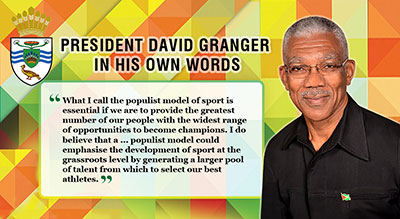
The Venezuelan claim was and remains the territory west of the Essequibo River. Venezuela requested the help of the United States of America to intervene in 1895 and an International Arbitration Tribunal was formed. In 1899, the Arbitral Award established the borders between Eastern Venezuela and Western British Guiana.
Former Guyanese Ambassador to Venezuela, Dr. Odeen Ishmael said that Venezuela willingly accepted this Award and fully honoured it until 1962. In that year, Venezuela declared that the 1899 border agreement was null and void, and again resuscitated the claim that all the land west of the Essequibo River – an area of about 50,000 square miles representing nearly two-thirds of the territory of British Guiana – was the territory of the Spanish-speaking republic.
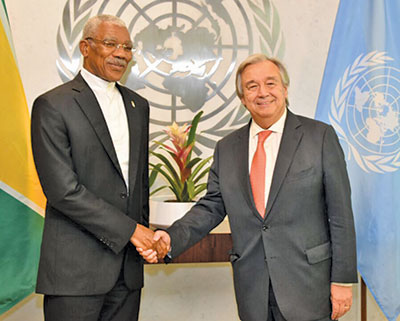
In order to resolve the controversy arising out of Venezuela’s contention that the 1899 Award was invalid, the Governments of Venezuela, Great Britain and British Guiana in February 1966 signed an agreement in Geneva, Switzerland, by which a Mixed Commission was appointed to seek satisfactory solutions for the practical settlement of the controversy arising from Venezuela’s contention of the nullity of the 1899 Award.
In 1970 under The Protocol of Port of Spain, both Venezuela and Guyana agreed to shelve the dispute for a period of at least 12 years. This Protocol came to an end in 1982 when Venezuela refused to renew it. Subsequent discussions by the two governments, under the terms of the Geneva Agreement, eventually led to both governments agreeing to request that the Secretary General of the United Nations find a method for bringing about a settlement.
The UN Secretary General in 1990 appointed a “Good Officer” to meet with representatives of Guyana and Venezuela to examine various proposals. Over the years meetings were convened but the Good Officer process failed to produce any results.
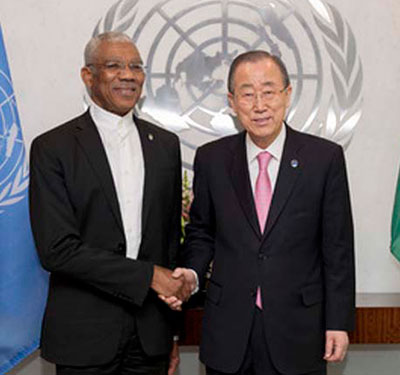
Secretary General of the UN, Mr. Ban Ki Moon
This year will mark 52 years since the signing of the Geneva Agreement. Venezuela remains relentless in its claims, having shown blatant signs of disregard for Guyana’s territorial integrity and stifling its economic growth.
Since 1966, the Venezuelan Army has been occupying Guyana’s portion of Ankoko Island, located in the Cuyuni Mazaruni area. In addition to this, in 2013, the region again became a subject of particular interest to its western neighbour. The Venezuelan navy entered Guyana’s waters and seized but subsequently released the MV Teknik Perdana, a seismic vessel, which was hired at the time by the United States oil company, Anadarko Petroleum Corporation.
Following this, in 2015, one week after oil giant ExxonMobil announced the discovery of significant quantities of oil in Guyana’s Exclusive Economic Zone (EEZ) and on the occasion of Guyana’s 49th Independence Anniversary, Venezuelan President Nicolas Maduro issued Decree 1787, claiming ownership of Guyana’s territorial waters in the Atlantic Ocean off of the Essequibo region.
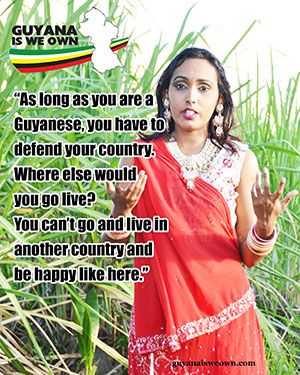 On July 7, 2015, President Maduro issued a second Decree 1859 reiterating its claims. As if that provocation wasn’t enough, in October of the same year, Venezuela’s Ambassador to Canada issued a warning letter to Guyana Goldfields Incorporated, a Canadian mining company operating in Guyana, informing that its operations are “infringing on the territorial sovereignty of Venezuela.”
On July 7, 2015, President Maduro issued a second Decree 1859 reiterating its claims. As if that provocation wasn’t enough, in October of the same year, Venezuela’s Ambassador to Canada issued a warning letter to Guyana Goldfields Incorporated, a Canadian mining company operating in Guyana, informing that its operations are “infringing on the territorial sovereignty of Venezuela.”
Just one month before, as President David Granger stood to deliver his first address as Head of State at the United Nations General Assembly (UNGA) in September, the Spanish-speaking nation deployed gunboats and troops along Guyana’s Borders.
It is in this context that President Granger decided that Guyana would seek a legal settlement to the dispute. The first step the President took was to appeal to the Secretary General of the United Nations at the time, Mr Ban Ki-Moon for a judicial settlement of the matter.
During the 70th United Nations General Assembly in Manhattan, New York in 2015, the Guyanese Head of State met with the Venezuelan President, Nicolas Maduro and Secretary-General of the United Nations, Ban Ki-moon to facilitate discussions on the controversy. President Granger said he took the opportunity to lay out the facts, none of which President Maduro could deny.
“I pointed out that Venezuela in 1899 received 1300 square kilometres of Guyanese territory and he could not deny that. All we said tonight was factual; about the territory, about the Venezuela aggression, the obstruction of Guyanese development,” President Granger said.
During a Foreign Policy Panel Discussion regarding the Border Controversy, Minister of Foreign Affairs Mr Carl Greenidge explained that after years of no results, it is time for International Law to take its course. He noted that the Geneva Convention allows the Secretary General to take this course of action.
“The Secretary General has the power to choose a means to resolve a matter if the two sides can’t agree. What Secretaries General have been doing since 1982 is to identify persons as representatives of the Secretary General to facilitate dialogue and cooperation and mechanisms that can eventually eliminate the controversy, in fact, all of those have failed… nothing has come out of it… Venezuela’s claims are so arbitrary that they go beyond any recognised boundaries that Venezuela endures,” Minister Greenidge said.
The Minister reiterated Guyana’s position in February 2016, while addressing the National Assembly during the budget debates. Minister Greenidge told the National Assembly that Guyana rejects the backhanded attempts being made by Venezuela to despoil Guyana of her rights. “Venezuela’s behaviour towards Guyana is a festering wound to peace and development in our region and an affront to the rule of law in the world. It must be healed by a process of law,” he said.
Diplomatic Advocacy
In his address at the opening of the 11th Parliament in June 2015, President Granger pledged the Government’s determination in securing Guyana’s borders and the strengthening of friendly relations with the neighbouring states of Brazil, Suriname and Venezuela. He stated that the security of their borders is important to the stability of the continent and to the success of the Union of the South American Nations.
“We will seek effective international collaboration to sustain economic growth and to preserve international peace. Your Government will continue to work towards the adherence to agreements that respect our territorial integrity on all three frontiers: Brazil, Venezuela and Suriname. We insist on the full implementation of agreements that guarantee sovereignty,” the President said.
As Guyana continued to pursue peaceful solutions to the controversy, in May 2016, a boat carrying officers of the Guyana Geology and Mines Commission came under fire from the Venezuelan Army in the area of Eteringbang on the Cuyuni River. Following the reports, President David Granger said that Guyana had sought clarity on the events that transpired. The President had said that a complaint was made to Venezuela but no formal response was received.
In December 2016, after Guyana’s advocacy at the United Nations, the Commonwealth Heads of Government meeting and at home in the Caribbean Community (CARICOM), the UN announced that the Secretary-General had decided that the Good Offices process to find a solution to the decades-old border controversy between Guyana and Venezuela will be given one more year and if by the end of 2017 “significant progress” has not been made, the case will move to the International Court of Justice (ICJ).
In April 2017, President Granger met with the United Nations (UN) Secretary General’s Personal Representative in the Good Offices Process on the border controversy between Guyana and Venezuela, Ambassador Dag Havland Nylander.
In his address to the 72nd UNGA in September 2017, President Granger said that peace in the Caribbean Region is at stake if justice does not prevail in the Guyana-Venezuela border controversy.
“Guyana looks to the international community to ensure that Venezuela is not allowed to thwart the processes of judicial settlement which is the clear and agreed path to peace and justice…Four UN Secretaries-General have been seized of the Venezuelan claims. The choice has become one between just and peaceful settlement in accordance with international law, and a Venezuelan posture of attrition that is increasingly more blustering and militaristic. In this matter, protraction is the enemy of resolution and the ally of sustained conflict,” he said on that occasion.
The Secretary General of the United Nations has now ruled that the controversy is referred to the International Court of Justice.
In next week’s edition of Government in Action, we will take a look at President Granger’s commitment to ensuring that the Caribbean and South America remains a zone of peace, the overwhelming support Guyana has received from the international community on the border controversy, the recent decision by the United Nations to send the matter to the International Court of Justice and what the future looks like as we pursue a legal settlement.



.jpg)








